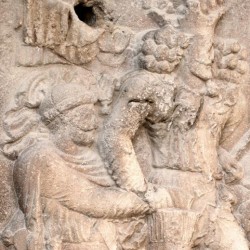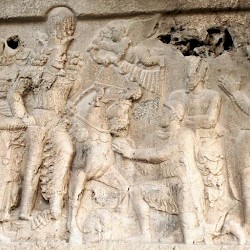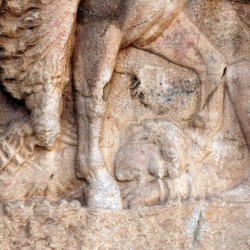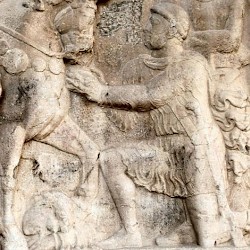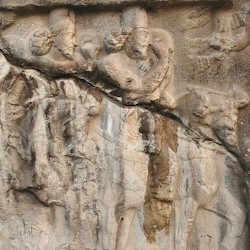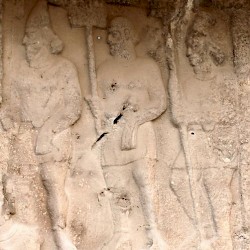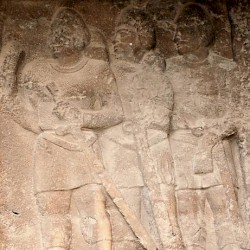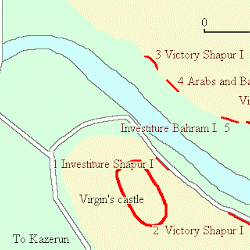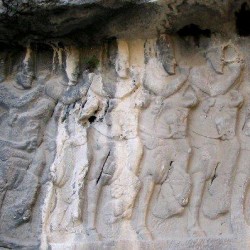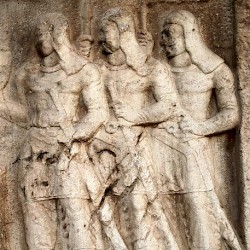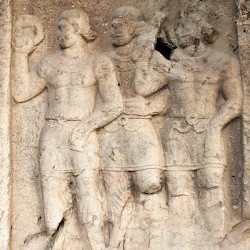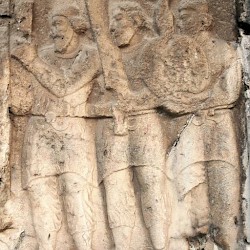Bishapur, Relief II
Relief II

Compared to the first relief of Bishapur, the second is far more complex and, fortunately, a lot better preserved. Another difference is that the first monument commemorates Shapur's investiture and his first victory, which he presents as gifts from Ahuramazda; in this relief, we see just a triumphant king, adored by his subjects. The only sign of divine help is a winged figure that brings the ring of power (cydaris) and the diadem.
Shapur had already defeated a Roman army, which he had commemorated on the first relief. In 244, the emperor Gordian III had been killed, and his successor Philippus Arabs owed the throne to Shapur. On the second relief, we can see the dead Gordian underneath the victor's horse.
In front of this horse, we can see Philip, Gordian's praetorian prefect, kneeling and begging to be spared. Indeed, he was recognized as emperor by Shapur and the Senate. On his second relief, Shapur reminded the viewers of his earlier success. However, in 260, the Sasanian king had defeated another Roman emperor, Valerian, and had even taken him captive. Valerian's men, of which a substantial part appears to have belonged to the Sixth Legion Ferrata, were forced to build the bridge at Shushtar and the city of Bishapur.
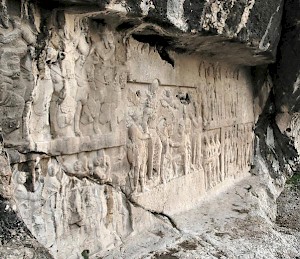
The main theme of the second relief was the glorification of this second victory. It is also shown on a monument at Naqš-e Rustam, where the capture of Valerian is depicted in a similar fashion.
In the central scene, two important courtiers can be seen to the right. One of them may be the high priest Kartir, who made Zoroastrianism the state religion and organized persecutions of adherents of other faiths. The other one, who carries a large sword, may or may not be the Surena, an important commander. We cannot be certain, because the badges on their caps, which usually help to identify the people depicted on the reliefs, are absent.
On both sides of the central scene, subjects of the king are depicted: two groups of cavalry to the left, five groups of infantry to the right. They salute the king with their right fist and a pointed index finger. This gesture can be seen on many Sasanian rock reliefs, and is still made by Bakhtiari nomads.
Today, the relief is protected by a fence, but it has become a favorite pick nick spot for many families.
Literature
- Louis Vanden Berghe, Reliefs rupestres de l' Iran ancien (1983 Brussels), #60.
